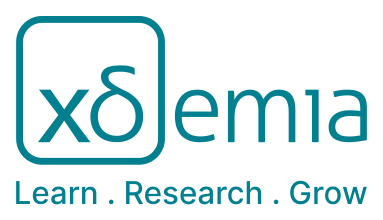Topology and control of MV multilevel AC-DC converters
9 Enrollments Level : AdvancedRelevance
MV AC-DC converters are pivotal for the future of efficient electrical power conversion. As electrical power demand increases and renewable energy sources become more integrated, the power grid faces significant challenges in controlling power flow, maintaining stability, and managing expansion.
MV DC-AC converters are essential for integrating renewable energy sources, such as PV parks and wind systems, into the existing AC grid infrastructure, ensuring compliance with necessary standards. Furthermore, MV AC-DC converters can act as a power interface between conventional AC grid and emerging DC grids. These converters are also crucial for future applications like traction inverters for high-power machines, including those on electrically powered ships.
Abstract
This module offers a comprehensive theoretical and practical exploration of medium voltage AC-DC converter topologies, their modulation, control design methods, and applications. The module begins with an introduction to use cases, suitable semiconductors, and the basics of controlled and uncontrolled rectification. It then delves into various power converters, including current source converters and multilevel voltage source converters, examining their operational principles and emphasizing the understanding of current and voltage waveforms.
This fundamental knowledge provides a deeper insight into the design aspects and evaluation of power converters. The module further explores modular power converters in different configurations addressing the associated control challenges. It covers modulating multilevel voltage source converters and presents a generic control design for various converter system configurations.
The theoretical knowledge gained can be directly applied in accompanying exercises and simulations. Additionally, laboratory exercises enable practical handling of AC-DC converters, offering hands-on investigation to complete a broad overview of medium voltage AC-DC converters.
Learning Outcomes
The student will be able to…
1. Identify key applications of MV AC-DC converters and describe semiconductor device characteristics (GCTs, IGBTs) for MV power conversion.
2. Explain fundamental principles of controlled and uncontrolled rectification for AC-DC conversion.
3. Analyze Current Source Converters (LCC, PWM-based CSC) operation and configurations and compare their characteristics for MV AC-DC use.
4. Analyze multilevel Voltage Source Converter topologies (NPC, FLC, MMC, Cascaded H-Bridge) by explaining their waveforms, features, and MV application suitability.
5. Explain and compare modulation strategies (multilevel Sine-Triangle PWM, SVM) for multilevel VSCs in MV systems.
6. Design and evaluate control structures (PI/PR, cascaded loops, dq-frame control, PLL) for MV AC-DC converters, including grid-tied systems.
7. Apply theoretical knowledge to analyze MV AC-DC converter performance via exercises and simulations.
Prior Knowledge
1. Operational characteristics and switching behavior of semiconductor devices like diodes, thyristors, IGBTs, and MOSFETs.
2. Principles of basic rectifier and DC-AC inverter topologies.
3. Pulse Width Modulation (PWM) concepts, particularly sine-triangle PWM for 2-level inverters.
4. Fundamentals of AC circuit theory including power calculations and power factor.
5. System modeling using transfer functions and block diagrams.
6. Feedback control principles and application of PI controllers (KP, KI) for eliminating steady-state errors.
7. Frequency domain analysis: interpretation of Bode plots, concepts of bandwidth, poles, zeros, and system stability.
8. Basic understanding of Park's transformation (abc to dq) for control of three-phase AC systems.
Keywords
- AC-DC Converters
- Medium Voltage Multilevel Converters
- Power Converter Control
- PWM Modulation
Elements
1. About this Building Block
Descriptor: Topology and control of MV multilevel AC-DC converters
2. Reader
Reader: Topology and control of MV multilevel AC-DC converters
The Reader delivers the basic knowledge about the topic. It introduces the student into the topics of AC-DC converter topologies and their control.
3. Exercises
Exercise: Topology and control of MV multilevel AC-DC converters
The topologies introduced in the reader are investigated in the exercise. The student can use the formulars derived in the reader and investigate their handling. Also, the student will use the formulars to calculate values he or she will later use in the simulation.
4. Simulations
Simulation: Topology and control of MV multilevel AC-DC converters
The simulation builds on the exercise. The participant can investigate the operation of complex systems described in the reader. Furthermore, both knowledge gained of the reader and exercise part are used here. The simulation combines the most complex parts of the BB and should be done at after the reader and exercise. Since the simulation can be done interactively, students can investigate what happens to the converter operation and control when changing parameters.
5. Self-assessments
Self-assesment: Topology and control of MV multilevel AC-DC converters
The participant can check if the most important learnings of the material were understood correctly.
6. Exercises
Laboratory: Topology and control of MV multilevel AC-DC converters Laboratory Tutorial
In the laboratory the participant gains insight in the practical handling of AC-DC converters.
7. Presentations
Presentation: Topology and control of MV multilevel AC-DC converters Laboratory Tutorial
In the presentation provides further material to understand the topics of the reader.
8. Video and knowledge clips
Video: Topology and control of MV multilevel AC-DC converters Laboratory Tutorial
The video explains the presentation in detail. It gives the students more insights and more explanation.
